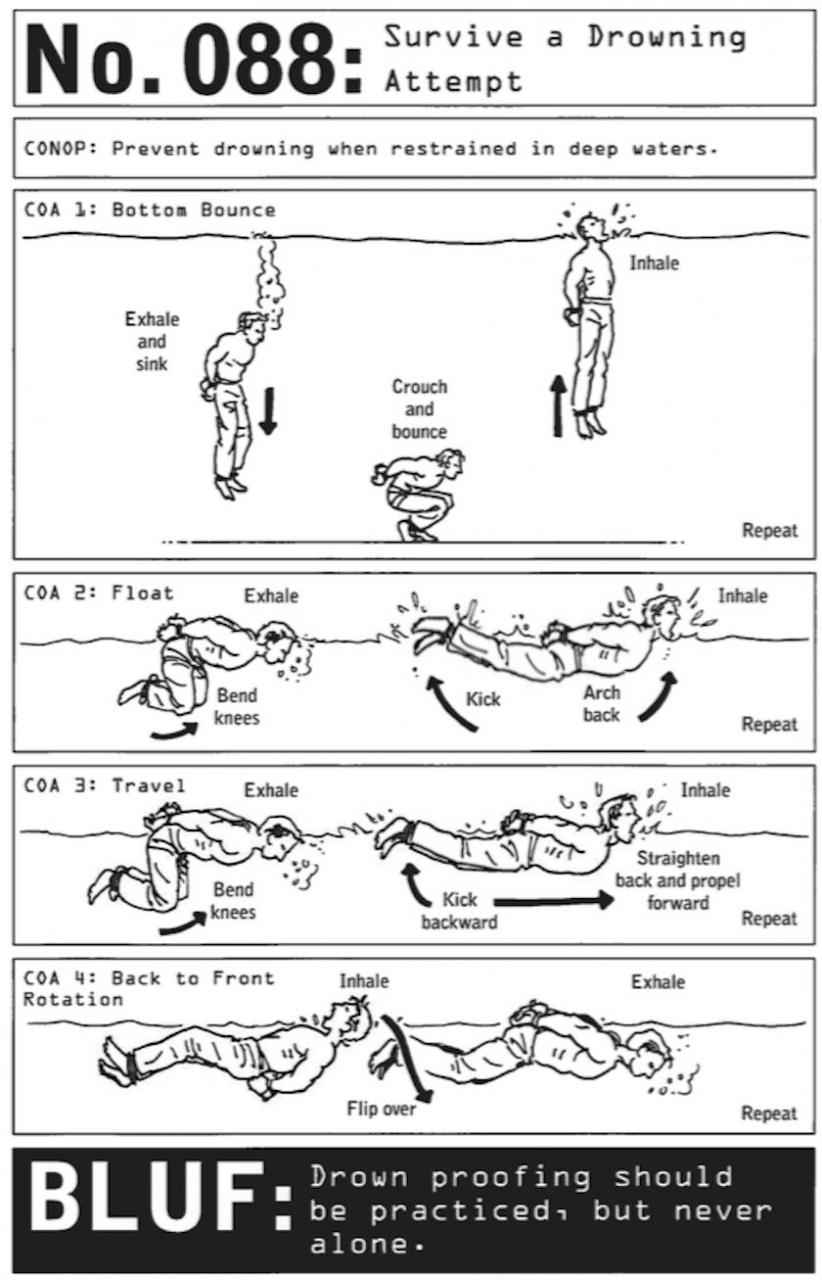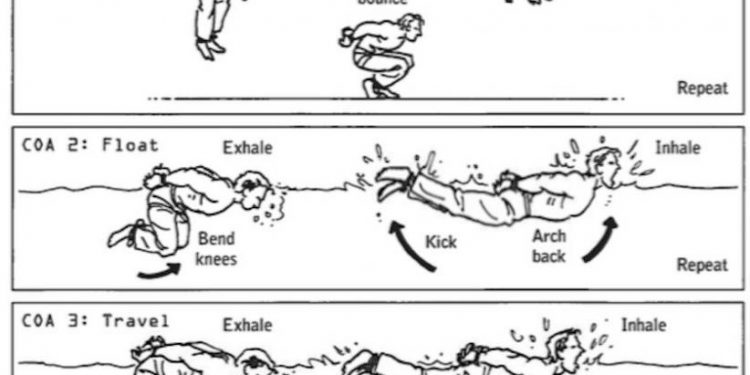If there are two ways I definitely don’t want to die, it’s burning and drowning. Arguably the nastiest ways to shuffle off this mortal coil, drowning is most people’s worst nightmare – hence why so many are wary of the water (especially the sea). I’ve only ever got into trouble in the water once in my 25 years, but I can assure you it was the scariest couple of minutes of my life. Nothing sets the heart racing more than the moment you realise you are well and truly out of your depth.
But if you think paddling at your local lido is risky, imagine being a U.S. Navy Seal in hostile territory being threatened with drowning. Clint Emerson is a former Navy Seal who has just written a book about 100 vital skills learned in the U.S. Navy and it’s well worth a read.

Among other things, Clint details the rigours that troops go through to make sure that being captured and killed behind enemy lines is not an option.
In this snippet from Clint’s book, 100 Deadly Skills: The SEAL Operative’s Guide, he explains what you should do if somebody tries to drown you. Listen up people, this could save your life.
“When an operative is captured in hostile territory, the odds of survival are low.
“Instead of being taken to trial, he will likely simply be made to “disappear” — which is why operatives practice escaping while wearing undefeatable restraints on hands and feet, both in water and on land.

“Tied up, thrown into open waters, and left to drown to death, the well-trained operative still has recourse to a few skills that can help extend his life until he is found or reaches solid ground.”
“When it comes to self-preservation in water, the key to survival is breath control. With the lungs full of air, the human body is buoyant — so deep breaths and quick exhales are key.
“Buoyancy in freshwater is more challenging but still achievable. Panicking, which can lead to hyperventilation, is the number-one enemy to survival.
“Restraints and body positioning may make breathing a challenge, but repositioning is always within the Nomad’s grasp. In shallow waters, use a sinking and bouncing approach (see diagram below) to travel toward shore, ricocheting off the seabed or lake floor up to the surface for an inhale.
“When facing down, whether floating in place or using a backward kicking motion to swim to shore, the operative should arch his back in order to raise his head above water.”
Obviously, nobody is going to try and drown you in a little stream and often Navy Seals are dealing with rough seas. This is the sort of hypothetical situation which frightens me to my very core. Thankfully however, Clint has more advice to make sure you don’t die.
“In rough seas, this may not give him enough clearance to get his head out of water. Instead, a full body rotation will allow him to take a deep breath and then continue travelling forward.”
Clint’s advice is designed to make sure that by travelling forward, you eventually reach dry land, or somewhere/something that will help you remove your restraints. Of course, this advice won’t make your rational fear of open water disappear and hopefully you’ll never have to follow it.
How To Survive If You’re Ever Drowning
0
Leave a Reply Cancel reply
BROWSE BY CATEGORIES
- #SmartLagos
- Basketball
- Beauty
- Boxing
- Breaking
- Business
- Careers
- Crime
- Default
- Education
- Entertainment
- Event
- Fashion
- Featured
- Football
- Gaming
- Gist
- Golf
- Health
- Inspirational Patience
- Interview
- Investigative
- Law
- Lifestyle
- local
- MetroMan
- MetroPerson
- metroplus
- MetroProfile
- Movies
- Music
- MUSIC
- New Music
- News
- nolly wood
- Nollywood
- Novels
- Odawood
- Opinion
- Parenting
- Photos
- Politics
- Press Release
- Relationship
- Religion
- Scandal
- Security
- Sex
- Society
- Sports
- Technology
- Travel
- TV
- Videos
- Weird
- Wheels
- World
BROWSE BY TOPICS
#COVID19Nigeria
#EndSARS
Adams Oshiomhole
Akinwunmi Ambode
APC
ASUU
atiku
Atiku Abubakar
Big brother Naija 2020
boko haram
Buhari
Bukola Saraki
CBN
court
COVID-19
davido
ECOWAS
Edo Election
Edo State Election
efcc
Featured
FG
Goodluck Jonathan
gunmen
INEC
Kayode Fayemi
Lagos
Lagos State
Muhammadu Buhari
NCDC
NDLEA
news
Niger
Nigeria
NLC
Obaseki
PDP
police
politics
President Buhari
Sanwo Olu
senate
tinubu
wike
Yemi Osinbajo
© Copyright MetroNews NG 2020. All rights reserved.









